Tiles today are actively used both for interior and exterior floor and wall decoration. This material has a lot of positive performance characteristics. Therefore, tiles are in demand today.
There are many varieties of this material. Plates differ in color, texture, shape. What technologies are used when laying tiles, as well as the features of this type of finish - all this will be discussed in detail below.
Material features
Laying tiles on the floor and walls is carried out using different technologies. This allows you to create an original design for any interior style. The tile is one of the most popular finishing materials. It is made using a special technology. To create it, clay and sand are mixed. The composition also includes feldspar, other fillers.
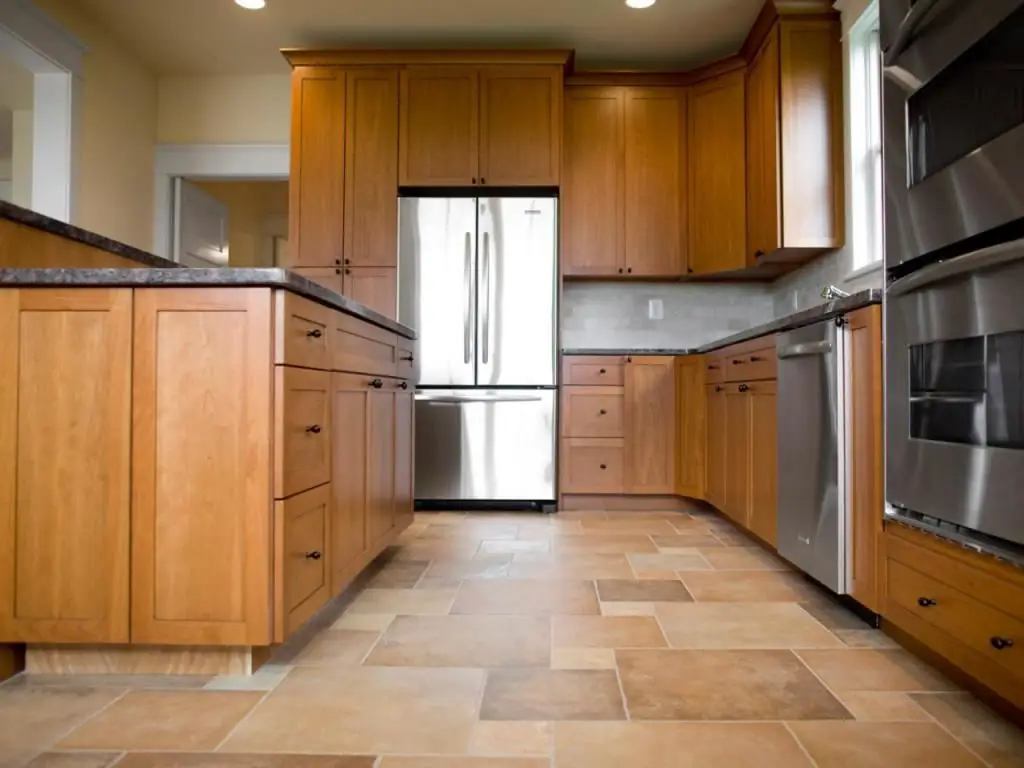
When the dry mass is well mixed, slabs are formed. They are fired in a kiln at high temperatures. This allows you to give the material high strength, durability and resistance to adverse effects. There are many methods for making tiles. Depending on technologyproduction produces a finishing material of a certain type.
Tile is used for cladding walls and floors, facades of buildings, finishing terraces, balconies, etc. A feature of this material is its strength. After heat treatment, it becomes stronger than stone. Plates are not subject to various adverse effects. They are not afraid of water, weather factors, chemicals. This makes the presented finish durable.
Laying tiles is a responsible task. If desired, the procedure can be performed by hand. It is necessary to choose the right material and mount it on the surface according to one of the possible systems. The tile differs in dimensions, thickness. They also produce different types of boards. The production of this type of finish is regulated by GOST. European-made tiles are produced in accordance with the EN ISO standard. Depending on the performance characteristics specified during production, tiles can be used in different finishes.
Varieties
The texture and shape of tiles can be very different. Today, many variants of such materials are produced. They differ in their appearance and production method.
One of the popular types of tiles is majolica. It is produced by strong pressing of the mixture. The surface is also covered with various opaque glazes. The firing of such material is carried out in two stages. This allows you to increase the strength of the tile. It becomes resistant to chemicals and water. Most often this material is used forwall cladding.
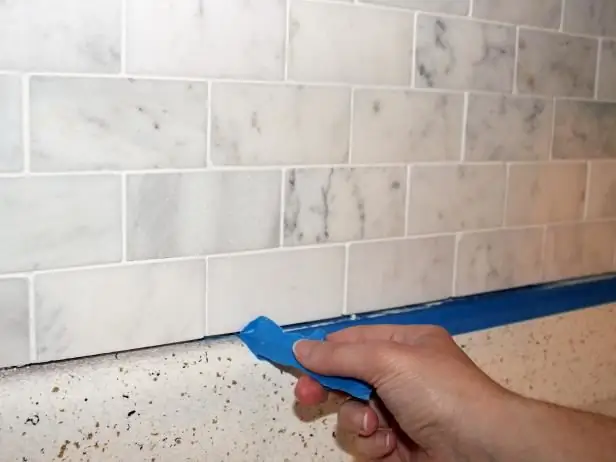
Terraglia is also made by double firing. However, for the production of this type of material, clay of expensive varieties is used. It is distinguished by its white color. Thanks to this, drawings of any shades can be applied to the surface of the plates. Top decor is covered with glaze. It can be transparent or shiny. This type of finish is suitable for designer interiors.
An unglazed cotto tile has a porous structure. It is made from special raw materials that are mined in the Mediterranean or the Atlantic Ocean. This is a very durable finishing material. This type of tile is used for flooring. The color of this tile is elegant. There are no analogues of this tile all over the world.
Laying tiles in the bathroom or kitchen is one of the best solutions. This material, even in conditions of temperature extremes, high humidity, will last for many years. Another popular variety is clinker tiles. It is made from natural clay, which is fired at very high temperatures. This is the most durable type of tile. It is used in places with high cross-country ability.
Slab shape
Today there are many varieties of tiles. They differ in color and shape. The most popular is square tile. However, many rectangular trim elements are also produced. Other varieties are also gaining popularity.
The texture of the plates can be any. She can imitatematerials. Popular today is tile, which has a pattern in the form of natural wood. It looks like parquet, so it has an elongated shape. This allows you to create the illusion of a wooden surface. At the same time, the material, unlike natural finishes, will not be subject to rotting and destruction in a humid environment. The texture can imitate natural leather, stone, pebbles, even wallpaper.
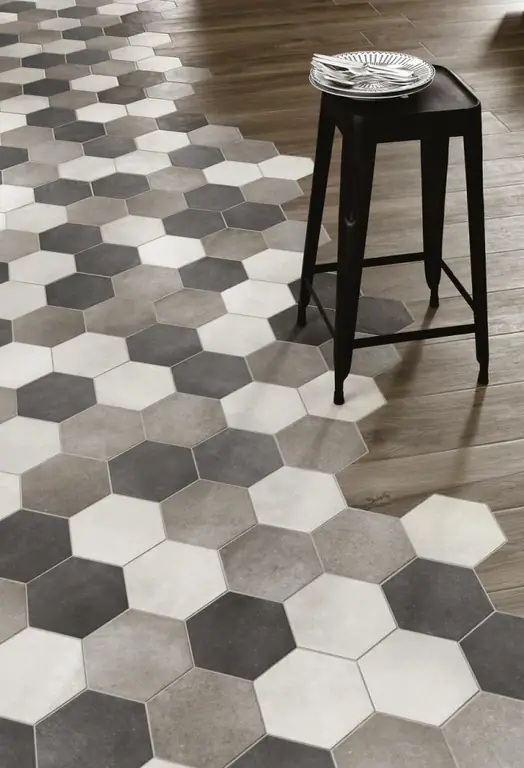
Today, many global manufacturers produce non-standard ceramic tiles. It can be made in the form of a hexagon or an octagon. This tile is gaining popularity today. It looks original and allows you to create a beautiful finish. These tiles may vary in size. Sometimes it looks like a mosaic. From such plates, you can create inserts in compositions. Even a small fragment of irregularly shaped slabs, inserted into a regular finish, allows you to give the design a fresh, unusual look.
Some collections feature triangular, diamond-shaped slabs. There are even round varieties of tiles. You can also create an original design from volumetric hourglass plates.
Laying tiles in the bathroom, in the kitchen can be made of "boar" tiles. It is also very popular today. Small-format plates have a rectangular shape. They look like brickwork. In the West, this type of slab is called "metro".
There is also a curved tile. It is created to give the finish a 3D look.
Format
Tile sizes can bethe most different. It can be very small. This type of slab is called a mosaic. There are also very large slabs. Small mosaic slabs are superior in strength to sm alt and glass finishes. It can be square or any other shape. Popular sizes are 25x25 and 50x50 mm. On sale is a mosaic of even smaller dimensions. It can have a size of only 10x10 mm. The round mosaic looks spectacular.
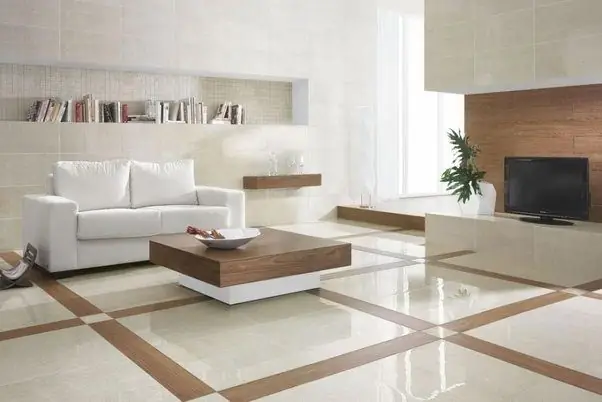
Sheets of thin porcelain stoneware can be large format. Such plates can have a size of 1500x500, 1000x1000, 1500x3200 mm. They are used for wall decoration. The larger the tile, the more fragile it is. For the floor, a thick medium-sized tile is used. Large slabs of tiles make it possible to finish, for example, a kitchen apron with a single panel. It will have no seams.
The size of the plates must be chosen correctly. The harmony of the whole interior depends on this. Also, the convenience of laying the material depends on the correct choice of dimensions. The format of the plates that are used for finishing the floor and walls is different.
Tile sizes can be small, medium and large. The category of small includes finishing with a side length of up to 300 mm. Finishing with a side length of up to 600 mm is considered medium. Large tiles are larger than 600 mm. The format is a conditional concept. It changes according to fashion design trends.
Thickness of floor tiles is 8-20mm, and wall tiles are 7-9mm. Its strength qualities depend on this. The larger the plates, theharder to fit.
Features of choosing a tile
Laying tiles on the floor and walls has a number of features. It is important to choose the right finish format. So, for laying mosaics, manufacturers produce it on a special grid. However, the installation process will still require special skills.
Small tiles will look appropriate in a room with a small area. If the room is spacious, it is better to combine small slabs with large trim elements. Small slabs can be laid on a surface with slight irregularities. This is their advantage. Large trim elements require a perfectly flat surface.
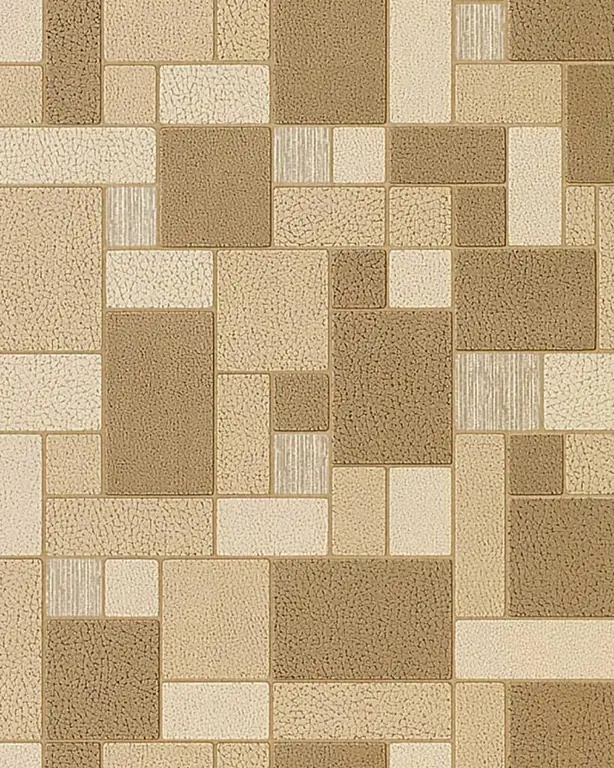
Medium-sized tiles are suitable for almost any room. This is a universal format. It is an easy-to-use material. With this facing, relatively few seams are obtained. This format of tiles is recommended to be chosen if the master does not yet have much experience in installing the cladding.
Laying large tiles is a good option for a spacious room. In this case, a minimum of seams is formed. This allows you to purchase less grout. Seam processing does not take much time. The surface looks more monolithic. Its waterproofing qualities will be on top. Larger tiles are chosen for the floor than for wall decoration.
Traditional and diagonal styling
There are different options for laying tiles. This allows you to create an original design. One of the most common is the traditional way of laying slabs. They areare located in parallel. The rows are closely adjacent to each other. The drawing looks straight. Usually used for this type of finish square or rectangular tiles. The masonry, which is created from slabs of different colors or textures, will look original.
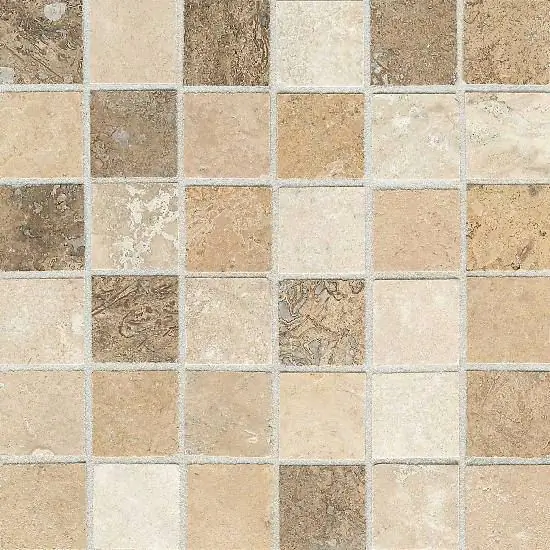
The traditional installation method is the easiest and fastest to install. When laying the master does not require high professional skills. Finishing is fashionable to do with your own hands. However, straight lines of the joints of the plates should be maintained. If there is at least a small factory defect on the tile, it will be conspicuous. This cladding looks monotonous. This method of finishing looks good with seamless installation.
Laying tiles in the kitchen, in the bathroom can be done using diagonal technology. This is a beautiful, but difficult installation method. In this case, it is important to correctly mark the diagonal axes. Requires slab cutting. This method of laying will hide the imperfections of the surface, the curvature of the floor. This type of installation is suitable for small rooms.
The pattern is laid diagonally at a 45º angle. Used square tiles. Even a plain tile will look interesting. This method of installation leaves a lot of waste. The space of the room visually expands.
Offset herringbone styling
There are original, unusual technologies for laying tiles. The installation of tiles with an offset looks interesting. It visually resembles brickwork. In this case, a rectangular tile looks best.monochromatic color. You can also use square varieties. The method also allows you to hide minor defects.
This type of installation is ideal for finishing the kitchen, corridor. The rows are arranged horizontally. Each subsequent row is shifted by half a tile. This masonry can also be done diagonally. It looks original, allowing you to hide the unevenness of the floor.
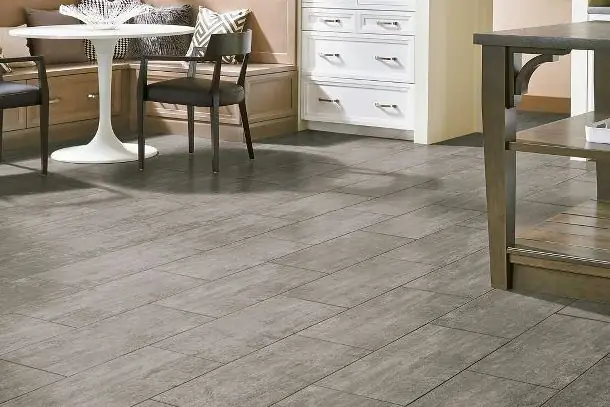
Laying tiles can have a herringbone pattern. Plates resemble a parquet board. A rectangular tile is used. There are two options for laying such a floor. The first one looks like a classic parquet (a simple "herringbone"). The second method includes an additional element, therefore it is called a "herringbone" with an attachment. Small square plates are used for this.
A feature of this pattern is the presence of special requirements for the tile pattern. Natural stone imitation slabs are not suitable for this type of finish. Solid color varieties or elongated rectangular stripes with wood grain colors are best suited for this finish.
Modular and offset laying
Do-it-yourself tile laying can be done using a modular type technique. This drawing looks especially original. He is able to decorate any floor. At the same time, even a master without much experience in finishing work can mount it. You just need to design the desired pattern first.
Tiles of different sizes are used for this pattern. It is necessary to clearly design the drawing before the tile is mounted on the surface. Heselected individually. Ready-made cards for laying material are on sale. They come with a set of tiles in different formats. The pattern is not uniform, but it is repeated many times.
Offset laying involves the use of large and small slabs. A tile with a large format is shifted by 5-6 cm. A small tile is installed in the resulting space. Such laying of tiles allows you to create a beautiful pattern that will also harmoniously complement the interior.
Preparation for installation
Before starting work, you need to prepare the necessary materials and tools. When the choice of drawing is made, measurements of the room are carried out. The required number of plates is calculated. For diagonal laying methods, you need to make a large supply of materials (about 20-25%).
You will need to purchase crosses to create uniform seams between tiles, a notched and small rubber spatula, as well as a building level for laying tiles. During the installation process, you will need a mallet, a tile cutter. Also purchased is an adhesive mixture for tiles, a mixer (or a nozzle for a puncher), as well as grout for joints.
As an adhesive, a ready-made mixture in buckets or a dry composition in bags is suitable. It is not recommended to use a cement-sand mixture for installation. Ready-made compositions include special additives to impart plasticity and strength to the mass. In this case, applying the composition, leveling the position of the tile will be much easier. To save money, it is recommended to purchase special dry formulations. them in the right proportion.diluted with water.
You also need to purchase grout. It is chosen based on the color of the tile itself. It is recommended to give preference to moisture resistant compositions. They can be contrasting, highlighting the color of the tile, or identical to the shade of the tile. The second option will allow you to create a monolithic-looking surface. The amount of fugue is chosen according to the type of installation, tile size, joint width.
Tile installation
There is a simple instruction for laying tiles. First you need to level the floor if it is uneven. In some cases, it is enough to repair small defects in the base with a solution. If there are significant differences, it will be necessary to pour a layer of self-leveling screed.
The surface must be thoroughly washed before installing the tile. You can apply a primer. Next, you need to determine the point from where the tile will be laid. It can be in the center of the room or in the middle of one of the walls. You can start laying from the corner if the opposite side is completely covered with furniture.
Next you need to prepare the adhesive mixture. It is applied to the surface of the floor. The layer should be the thicker, the heavier and more massive the tile. Level the mortar with a notched trowel.
After that, tiles are laid on the mortar. She is pressed down with her hands. A mallet (with a rubber tip) should be tapped on the corners. So the solution is evenly distributed under the tile. Next, the building level checks the horizontal surface of the tile. If necessary, tap a little on the highest corner with a mallet.
After laying the second tile alongof the same technology, a plastic cross is inserted between them. If the solution gets on the surface of the tile, it must be immediately wiped off with a damp cloth. After the surface has dried, you need to coat the seams with grout.
Having considered how the tiles are laid, you can mount the flooring yourself.






